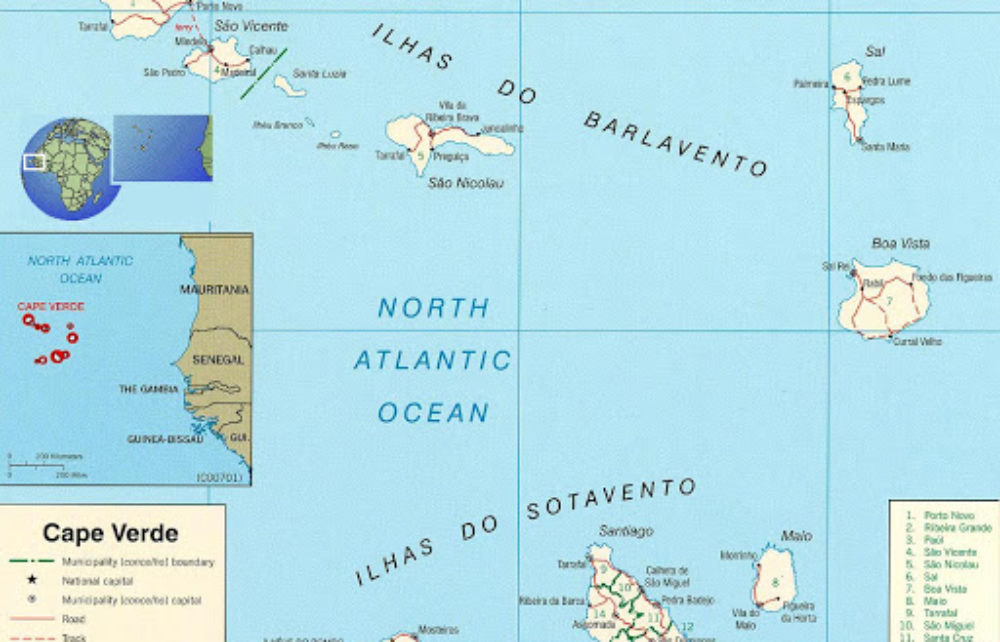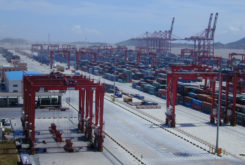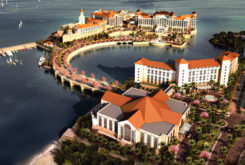Cabo Verde’s Government is seeking Chinese investors for its Sao Vicente Special Maritime Economic Zone Project, a centerpiece of the country’s effort to diversify its economy from Tourism and boosting activity post-pandemic.
Minister of maritime economy, Paulo Veiga, told Macao Magazine that “Cabo Verde is in a strategic position for the maritime economy and sea traffic,” and that the new SEZ, which focuses on shipping, trading, fishing, shipbuilding and other marine activities, aims to ‘integrate the traffic in our region’ while the whole island of São Vicente ‘becomes a logistics hub for trade with the three continents around us’, Africa, Europe and South America.
Cabo Verde’s government approved the general SEZ legislation in March and the next phase, already ongoing, is to create an authority that will run the project.
In the interview, Veiga says that China has been a key partner in the planning stages of the São Vicente SEZ project because it has created more SEZs than any other country in the world and ‘has had more success’ in terms of using them for its own industrial and economic growth.
During the planning phase for the São Vicente SEZ, a team of around 20 experts from Cabo Verde partnered with a team of Chinese SEZ experts and visited some of the existing SEZ trading hubs in China. These visits helped the Cabo Verde team to develop a masterplan.
Veiga foresees the São Vicente SEZ authority going into full speed early next year. One of the first tasks will be to organise an international roadshow for investors and another will be to launch international tenders for infrastructure to be built under public-private partnerships in São Vicente’s port area.
Projects will include a cruise terminal, a shipyard for building and repairs, a fishing dock and a new industrial zone, as well as associated infrastructure works like roads. Veiga says that if there are major partners ‘who want to have a container terminal or a fishing dock’, Cabo Verde can grant exploration rights to these companies, helping investors to ‘build and explore’ the logistics facilities.
Veiga notes that investors from Europe and Asia have already shown interest in projects within the new SEZ. He says that some Chinese companies have ‘expressed interest and visited the site’.
The government used some international business forums last year – in Europe, the US and Cabo Verde – to increase awareness about the São Vicente project. Veiga says at these forums there was ‘a lot of interest and companies wanting to be part’ of the SEZ when it officially launches following public consultation.
Of course, he recognises ‘the uncertainties related to the pandemic’ will now make planning more difficult but he nevertheless expects the project to be ‘a success’ as São Vicente offers a unique combination of strategic location and proximity to major international maritime routes in a politically stable area.
“This SEZ did not happen by chance,” but “because major players across the world expressed an interest to invest here and transform the country in a logistics hub,” he told Macao Magazine.
In 2017, during a two-day visit to São Vicente, Chinese foreign minister Wang Yi declared his country’s willingness to co-operate in the development of SEZs.
According to a China Ministry for Foreign Affairs transcript from Wang Yi’s 2017 talks in Cabo Verde, his counterpart Luís Filipe Tavares said, at the time, that his country ‘especially hopes’ to become China’s ‘strategic co-operative partner’ when it comes to its maritime economy. He said this was a priority for his government and also highlighted a desire to integrate the São Vicente SEZ into China’s Belt and Road Initiative, a Beijing plan to boost its role in international trade routes by financing infrastructure investments in countries across the world.
Wang Yi said that Cabo Verde ‘is a natural extension of the Belt and Road Initiative, especially the Maritime Silk Road’ and welcomed the country’s willingness to actively participate in the initiative.
Veiga is confident that Chinese investors will come to São Vicente and that the island could receive, over time, large-scale infrastructure investments connected with the Belt and Road Initiative.
“We think the conditions are in place for Chinese companies to invest in the SEZ,” he says. “It is hard to be in the world economy and not to have China as a partner – but it has to be under conditions that are also in Cabo Verde’s interest.”
In the interview with Macao Magazine, Veiga says that SEZs are ‘more important and urgent’ than ever. “Our economy is very dependent on tourism,” he says, “and the forecast for this sector is that it will remain constrained over the next two to three years.”
He underlines that Cabo Verde’s government ‘has made a bet on the maritime economy’ in order to diversify. “Diversification is always a cultural change,” he says, “and we have to do it as soon as possible and have an economy which is more resilient to external impacts and changes that are taking place in the world.”
While the São Vicente SEZ will be the first and most important of its kind, it’s not the only one that’s planned in Cabo Verde. The SEZ legislation that was approved in March foresees the creation of two others: one on Cabo Verde’s largest island, Santiago, which will be dedicated to information and communication technologies, and another on the island of Fogo.
China wants its companies to be part of Cabo Verde´s Special Maritime Economic Zone project in São Vicente, the Asian country´s ambassador to Cabo Verde has said.




